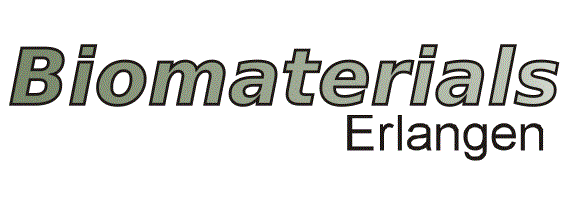Lukas Hofer
Lukas Hofer
Master student
Fabrication of composite coatings based on chitosan and bioactive glasses via electrophoretic deposition
Supervisors: Asim Muhammad Akthar, Prof. Aldo R. Boccaccini
For a successful implantation of a total joint replacement a certain bioactivity and osseointegration is required by the implant. Both characteristics are dependent on the implant surface which can be adjusted by a coating [1]. Due to its versatility and ability to process a wide field of materials at room temperature electrophoretic deposition (EPD) is a widely used method for coating substrates [2]. For increasing the bioactivity, bioactive glass is an often used material, since it shows an excellent osteconductivity and osteogenic potential. By adding the natural polymer chitosan to the coating a better mechanical stability and controllable degradation rate of the coating can be achieved [3].
[1] Joy-Anne, N. Oliver, et al. “Bioactive glass coatings on metallic implants for biomedical applications.” Bioactive materials 4 (2019): 261-270
[2] Boccaccini A. R., Keim S., Ma R., Li Y. and Zhitomirsky I., Electrophoretic deposition of biomaterials, Journal of the Royal Society Interface, Bd. 7, pp. 581-613, 2010.
[3] Pishbin, F., et al. “Electrophoretic deposition of chitosan/45S5 Bioglass® composite coatings for orthopaedic applications.” Surface and Coatings Technology 205.23-24 (2011): 5260-5268.

